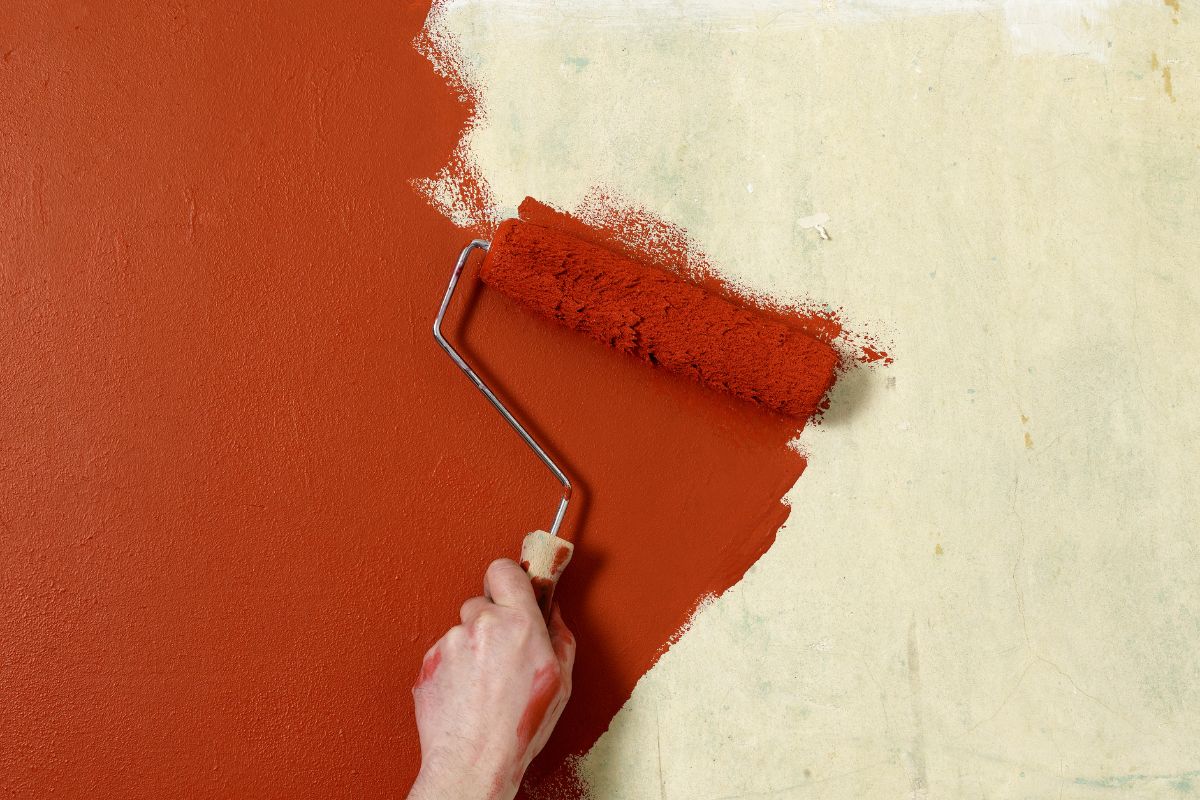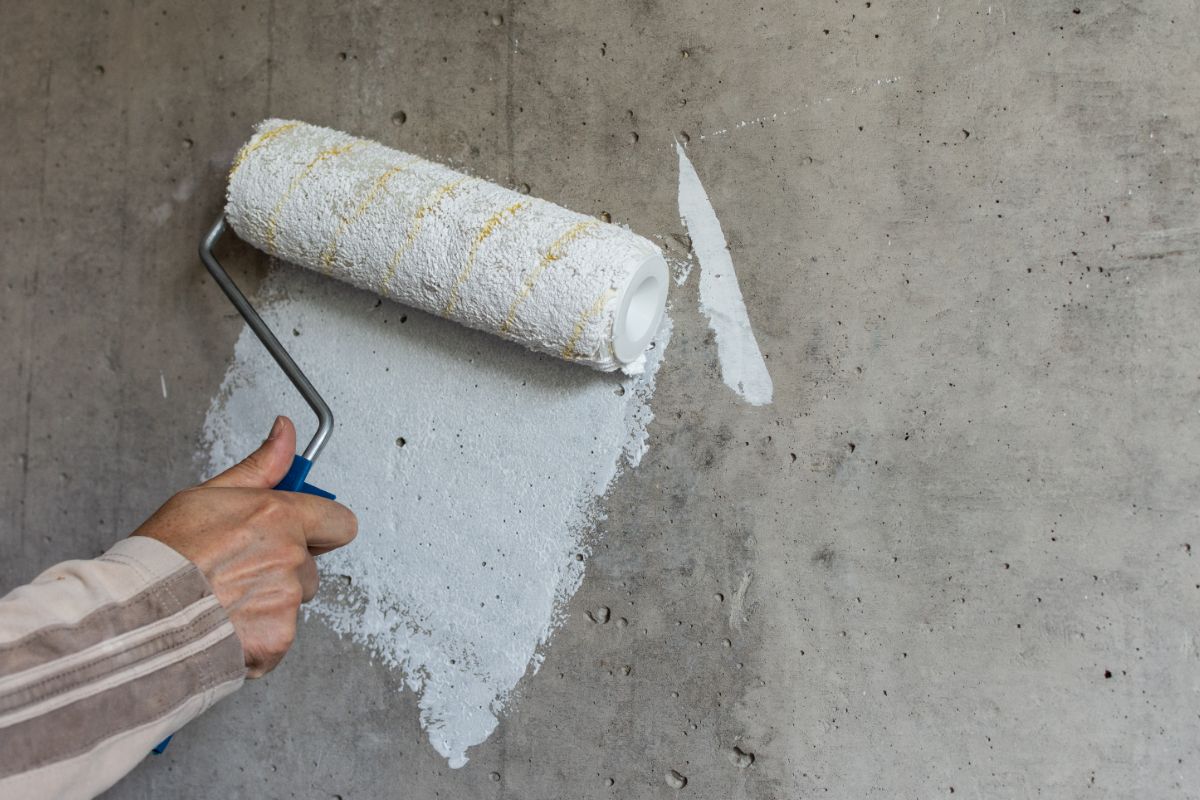A typical DIY job that many people attempt themself is painting a room.
They start painting the walls by gathering paint, a paint tray, a paintbrush, and a paint roller.

However, if you have never attempted a painting project, you might not be aware that there are several types of paint, paint trays, paintbrushes, and paint rollers.
While picking the incorrect brush can result in a streaky finish, picking the incorrect paint container can cause the project to take much longer than intended
It’s important to understand more about the paint and tools you’ll need before beginning a job for these and a number of other reasons.
And we’re here to help!
Rollers for applying paint are a simple tool.
They are made up of a handle, a metal roller frame holding a paint roller cover, and a metal roller.
Despite the tool’s simplicity, there are a variety of paint roller types and paint roller cover alternatives based on size, function, fabric, and pile height.
Learn how to select a paint roller for your upcoming home improvement project with this complete guide.
What To Consider Before You Choose
Many people grab the first paint roller they come across without taking its size, intended location, or style of roller cover into account.
The improper roller cover could cause an uneven finish, and this error could cause the project to be delayed.
Learn about the factors to take into account before purchasing a paint roller.
Fabric
Finding the right fabric for the job is essential when selecting a paint roller cover or sleeve. Lambswool, foam, or woven or knit synthetic materials are frequently used to make paint roller coverings.
If you’re painting inside walls and ceilings, choose woven or knit synthetic paint roller covers.
This material produces a smooth, consistent finish and sheds less than lambswool.
The knit synthetic roller sleeves are preferable for flat or eggshell finishes, while the woven synthetic coverings perform best with glossy finishes.
For a more uniform finish when using oil-based paints, switch to a lambswool roller cover.
A great material for glossy latex paint is lambswool, but be aware that the rollers frequently shed.
For painting flat surfaces, such as delicate furniture, foam rollers work well.
To finish woodworking projects, use these rollers with varnish, polyurethane, or paint.
Pile Height
When the user applies a little pressure, the paint roller sleeves take paint from the paint tray and release it on the surface.
To prevent giving smooth surfaces an uneven finish or having trouble painting rough or highly textured surfaces, you should carefully consider the pile height or nap of a paint roller.
Ordinarily, paint roller sleeves with a 3/8-inch to 1/2-inch nap or pile height are needed for interior painting operations.
However, a 3/4-inch to 1-inch pile height is appropriate for rougher surfaces, such as the rear deck or fence.
It may be necessary to use a paint roller pile that is between 1 1/4 and 1 1/2 inches thick on brick, cinder block, and stone surfaces.
Size
Before choosing a paint roller, it’s crucial to take into account the area you’ll be working with because paint rollers come in a variety of sizes.
It is recommended to opt for a standard roller, which normally measures 9 inches in length, if you are painting average-sized walls.
Larger paint rollers, which range in size from 12 inches to 18 inches, are available for larger walls and ceilings.
However, a mini paint roller is the best option if you’re working with trim, doors, door frames, or narrow walls.
They are available in a range of lengths, such as 2-inches, 3-inches, 4-inches, and 6-inches.
Just bear in mind that a project can require a variety of roller sizes.
Types Of Paint Rollers

Manual Paint Rollers
The name “manual paint roller” refers to the most popular kind of roller.
These are the conventional paint rollers that are used for painting interior walls and ceilings.
They have a simple handle, frame, and rotating metal roller. When they have the appropriate paint roller cover, they can also be used outside to paint exterior surfaces.
These paint rollers have the issue of occasionally being too lengthy for painting thin surfaces, such as baseboards and door frames.
Manual rollers are one of the more reasonably priced varieties, nevertheless.
They can also be found as a mini version, which is perfect for tight corners and hard-to-reach places that you wish to paint.
Textured Paint Rollers
Instead of the actual roller, a textured paint roller is a reference to the roller sleeve.
Using a manual roller and textured paint sleeve, you may replicate patterns like wood grain, brick, or stone textures or come up with original ones.
Although these patterns can be difficult to discern on smaller walls or surfaces, it is recommended to use textured paint rollers on bigger walls where the pattern is obvious.
The sleeves are constructed of foam and have distinct patterns carved in to achieve the desired look.
Pad Paint Rollers
Pad rollers do not roll, despite the fact that they are nonetheless categorized as rollers.
They have a flat pad that absorbs the paint before releasing it in smooth, even strokes onto the desired surface.
These rollers’ construction helps to reduce paint splatters, which are frequent with manual paint rollers.
Paint pads aren’t the best for covering deeper or more vivid colors because they only apply a thin coat of paint to the wall, ceiling, or any other surface.
Specialty Paint Rollers
A specialty paint roller is designed to produce specific paint patterns, much like textured paint rollers.
Specialty paint rollers are not merely manual paint rollers with an inventive roller sleeve, which is the fundamental distinction between the two varieties.
These are specialized implements made by the producer for particular textured paints.
Although you are not required to use these rollers with textured paint, you might find that they produce better results than more versatile textured paint roller sleeves.
Final Word
Now that you know about the different types of paint rollers and what to consider before purchasing one, you can go into your painting project with complete confidence.
Use this guide to help you achieve the best results.
- How To Drill Into Brick? - October 31, 2022
- How To Repair And Refinish Hardwood? - October 31, 2022
- Floetrol – What Is It? When To Use It: Complete Guide - October 31, 2022
